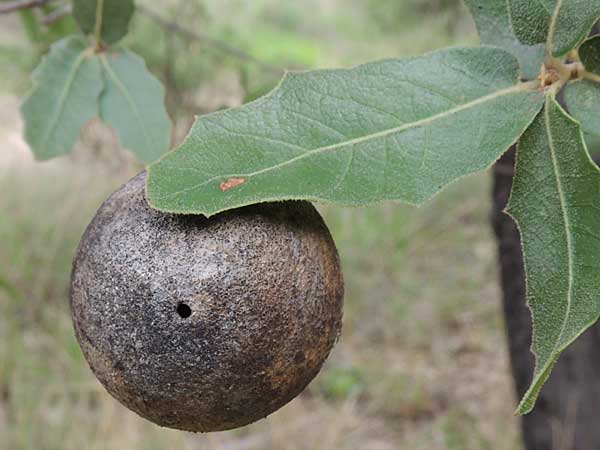Emory Oak Apple Gall
Atrusca ?

Observed in the riparian corridor of Florida Canyon, Sta. Rita Mts., Arizona, USA. 27 July 2013. Host tree is Quercus emoryi.
Sponsored Links:
First off, gall wasps do not sting. In deed they are so delicate and small you would be troubled to actually notice one in flight from more than a few tens of centimeters away. Oak trees almost always have one or many gall wasp species in association.
These intriguing structures attached to the leaves of oak represent millions of years of co-evolution between tree, insect, maybe bacteria as well as many other insects that live in and on oak trees. The gall began when the leaf was just emerging from the growing branch tip - that is when a female Cynipidae inserted a very tiny wasp egg into the fresh, growing tissue. Over the course of a few weeks the gall enlarged - a reaction by the plant in response to the feeing of the minute wasp larvae (grubs). In a mysterious way the wasp larva directed the precise size, location and shape of the gall by means of plant growth hormones. Each gall type on each plant species is a different gall wasp at work. Occasionally these galls produced by the interaction between a cynipid wasp and the growing leaf tissue become inhabited by other insects, mites or fungi - predators or perhaps followers. The gall pictured here has long been emptied of its original inhabitants - they emerged through the small hole!
Cynipidae -- Gall Wasp Family
More Information:
- Wikipedia
- Bugguide Iowa State University
- Encyclopedia of Life
- Google Images
- Google Scholar Literature Search